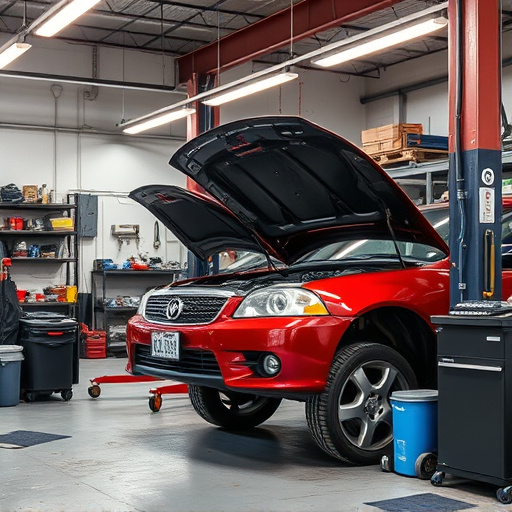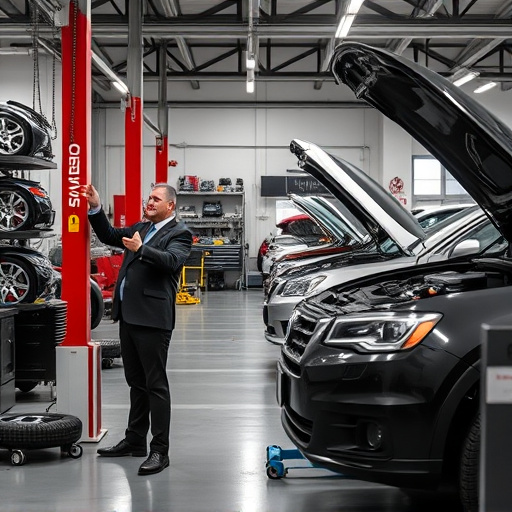Regular airbag system repair and maintenance are crucial for vehicle safety. Following collisions, professional inspection is vital to identify damage and ensure proper restoration by certified shops. Transparent communication and visual aids educate owners about airbag malfunctions' risks, enhancing road safety through proactive measures. Collision repair experts play a key role in promoting passenger protection through airbag system checks and education.
In today’s automotive landscape, educating customers about their vehicle’s critical safety features, such as airbags, is essential. This article explores strategies to help auto shops and service centers effectively communicate airbag system repair needs to customers. We delve into understanding the complexities of airbag systems, implementing clear communication strategies, ensuring proper maintenance, and fostering customer trust through education on these vital repairs, ultimately enhancing road safety.
- Understanding Airbag System Repair Needs
- Effective Communication Strategies for Customers
- Ensuring Proper Maintenance and Education
Understanding Airbag System Repair Needs

The airbag system is a critical component of modern vehicles designed to protect occupants during accidents. Understanding its repair needs is paramount for both car owners and collision repair shops alike. Regular maintenance and timely repairs are essential to ensure the effectiveness of airbags, which can save lives. Airbag system repair involves several steps, including inspecting components like sensors, inflators, and fabric panels for any damage or wear and tear.
In the event of a collision, even minor ones, it’s crucial to have a professional assess the airbag system. A qualified auto body repairs expert will identify if replacement parts, such as bumper repair or airbag module restoration, are necessary. Given the potential hazards associated with airbags, it’s recommended that car owners stick to trusted and certified collision repair shops to handle any repair or maintenance tasks, ensuring both safety and quality in the process.
Effective Communication Strategies for Customers

Educating customers about their airbag system repair needs requires clear and concise communication. Use simple language to explain complex procedures, focusing on key aspects like the importance of timely repairs, potential risks of ignoring airbag malfunctions, and how these issues can impact safety. Visual aids, such as infographics or videos demonstrating common airbag problems, can significantly enhance comprehension.
Personalize your approach by addressing concerns specific to each customer’s vehicle make and model. Offer additional resources like informative brochures or online tutorials to encourage further learning. Building trust through transparent communication fosters a positive relationship between the repair shop and its clients, ensuring they understand not just the airbag system repair process but also the broader implications for their safety on the road.
Ensuring Proper Maintenance and Education

Proper maintenance is key to ensuring the effectiveness of airbag systems, which is why educating customers about regular checks and potential issues is crucial. Many car owners often overlook airbag system repair as part of their vehicle’s routine maintenance, primarily because airbags are not visible or actively used until a collision occurs. However, regular inspections by qualified technicians can identify wear and tear, sensors malfunction, or other problems that might compromise the system’s performance during an emergency.
Automotive collision repairs professionals play a vital role in providing this education to their customers. They can offer guidance on the frequency of airbag system checks, explain common issues to look out for, and recommend suitable maintenance routines. By empowering car owners with knowledge about these safety features, they contribute to keeping roads safer and ensuring that vehicles are ready to protect passengers in case of a car collision or other accidents involving airbag deployment.
Educating customers about their airbag system repair needs is a vital step in ensuring vehicle safety. By implementing effective communication strategies, such as clear and concise information sharing, personalized consultations, and leveraging various educational resources, businesses can empower owners to make informed decisions regarding their airbag systems’ maintenance and repairs. Regular maintenance and timely repairs are crucial to preserving the integrity of these life-saving devices. Through proper education, customers can navigate the complexities of airbag system repair, ultimately contributing to enhanced road safety for all.














